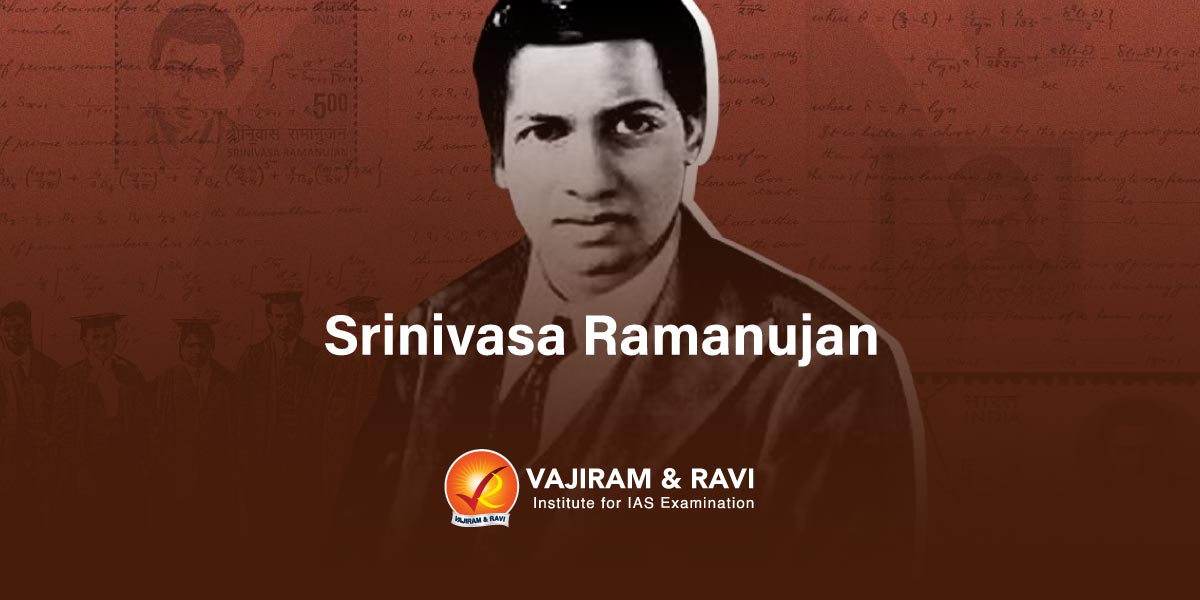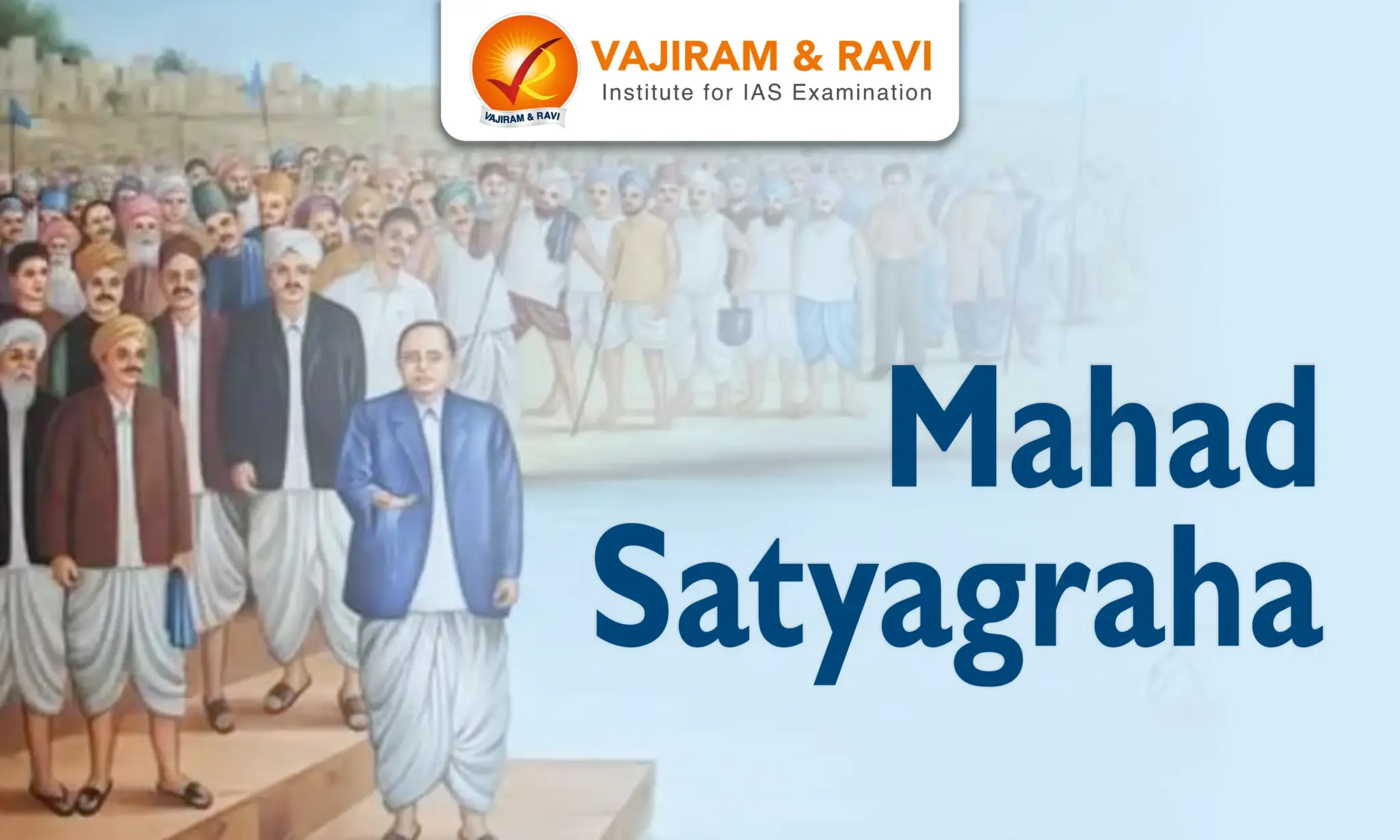Srinivasa Aiyangar Ramanujan was India’s greatest mathematical genius. He was born on December 22, 1887, in Erode, Tamil Nadu. He studied in Kumbakonam and proved himself to be an able all-rounder. His love for mathematics from an early age was unusual. He was introduced to the world of mathematics by a book by G. S. Carr titled “Synopsis of Elementary Results in Pure Mathematics”. He developed his own ideas and methods and put them up in sometimes called Ramanujan’s Frayed Notebooks, which he studied and edited a number of times by other great mathematicians. His formal introduction to the world was facilitated by Prof. G. H. Hardy (Trinity College, Cambridge), who considered Ramanujan the greatest mathematician on the basis of pure talent.
Despite his short life span and lack of formal university education, Ramanujan has left behind around 4000 original theorems, which has placed him amongst world greats like Euler, Jacobi, Gauss, etc.
Early Life and Career of Ramanujan
Srinivasa Ramanujan was unable to finish college because he continued to develop his theories and began posing and answering puzzles in the Journal of the Indian Mathematical Society. He published in that journal an extraordinary research paper on Bernoulli numbers in 1911. He was recognized for this research paper and became a mathematical genius in the Madras circle.
- It took a lot of work for Ramanujan to balance his finances due to his lack of formal education. He managed to secure a position as a clerk at Madras Port Trust, which was fortunate for him. He met a lot of people there who were excellent at mathematics.
- He showed an early interest in mathematics and, by age eleven, had mastered differential equations. After a limited formal education in India, he began working on his own mathematical research.
- He enrolled at Pachaiyappa’s College in Chennai, where he studied under the guidance of Professor Srinivasa Iyengar.
- Ramanujan came across a book titled 'Orders of Infinity', written by G. H. Hardy. He referenced 120 theorems and formulas in a letter to him. As soon as Hardy realised his brilliance, he set up a ticket to London for him.
- Hardy recognised Ramanujan's talent and invited him to England to further develop his skills. Ramanujan spent the last five years at Trinity College, working in collaboration with Hardy.
- Despite his lack of required qualifications, he was allowed to enroll at Trinity College, where he got his Bachelor of Science degree in less than two years.
- He published many papers in London.
Contributions of Srinivasa Ramanujan
When Ramanujan started teaching himself mathematics at the age of 12, he began to exhibit early signs of his brilliance. He had mastered differential calculus by the age of 16, and he had also become very interested in continued fractions.
- Srinivasa Ramanujan made significant contributions to infinite series, mathematical analysis, number theory, and continued fractions.
- He made significant contributions to the theory of partitions, a branch of number theory dealing with the ways that numbers can be divided into smaller parts.
- His work on modular forms and hypergeometric series is particularly well known.
- G. H. Hardy and Ramanujan worked together on projects involving prime numbers and the Riemann zeta function.
- His infinite Pi series is one of his most prized discoveries. He provided a number of formulas to compute the digits of Pi in a variety of novel ways.
- Despite a lack of formal training, Ramanujan made significant contributions to mathematics. Many of the identities and new theorems he discovered today bear his name.
- We have three of his notebooks for research. They are called Ramanujan’s Frayed Notebooks.
Ramanujan Theory
A branch of mathematics, Ramanujan theory deals with the study of integers and their properties.
- Ramanujan's work on integers was inspired by his interest in solving problems in number theory.
- He was able to make substantial progress in understanding the nature of numbers and their relationships to one another. His work has had a long-lasting impact on mathematics and has served as an inspiration to numerous other researchers.
- Ramanujan theory is characterised by its focus on the study of whole numbers and their properties. It is a relatively young branch of mathematics but has already yielded some deep and beautiful results.
- Mathematicians from all over the world are still working to develop the theory, and it is certain to produce more interesting findings in the future.
Honours Received by Srinivasa Ramanujan
Srinivasa Ramanujan was the first Indian to be chosen as a Fellow of Trinity College. For his contributions to the theory of numbers and complex numbers, he was named a Fellow of the Royal Society in 1918.
- He received a prestigious award from the King of England for his services to mathematics.
- National Mathematics Day is observed annually on December 22, on the birth anniversary of Srinivasa Ramanujan.
- He is known for the Ramanujan number, which is 1729, which he explained to Hardy, even in hospital bed. It is the smallest number whose sum can be represented in two different ways by the sum of two different cubes.
- Adding the cubes of 10 and 9 or adding the cubes of 12 and 1.
- "The Man Who Knew Infinity" is a famous biopic on Ramanujan.
Ramanujan had an intimate familiarity with numbers. He suffered a serious illness in 1917, but the numbers stood by him even as his body turned against him. He returned to India in 1919 "with a scientific standing and reputation," but sadly, his health deteriorated. In 1920, Ramanujan died prematurely at the age of 32 from tuberculosis; however, his legacy continues to live on through modern mathematicians who continue to be inspired by his work.
Last updated on November, 2025
→ Check out the latest UPSC Syllabus 2026 here.
→ Join Vajiram & Ravi’s Interview Guidance Programme for expert help to crack your final UPSC stage.
→ UPSC Mains Result 2025 is now out.
→ UPSC Notification 2026 is scheduled to be released on January 14, 2026.
→ UPSC Calendar 2026 is released on 15th May, 2025.
→ The UPSC Vacancy 2025 were released 1129, out of which 979 were for UPSC CSE and remaining 150 are for UPSC IFoS.
→ UPSC Prelims 2026 will be conducted on 24th May, 2026 & UPSC Mains 2026 will be conducted on 21st August 2026.
→ The UPSC Selection Process is of 3 stages-Prelims, Mains and Interview.
→ UPSC Result 2024 is released with latest UPSC Marksheet 2024. Check Now!
→ UPSC Prelims Result 2025 is out now for the CSE held on 25 May 2025.
→ UPSC Toppers List 2024 is released now. Shakti Dubey is UPSC AIR 1 2024 Topper.
→ UPSC Prelims Question Paper 2025 and Unofficial Prelims Answer Key 2025 are available now.
→ UPSC Mains Question Paper 2025 is out for Essay, GS 1, 2, 3 & GS 4.
→ UPSC Mains Indian Language Question Paper 2025 is now out.
→ UPSC Mains Optional Question Paper 2025 is now out.
→ Also check Best IAS Coaching in Delhi
Tags: quest srinivasa ramanujan

















